Principal Investigators
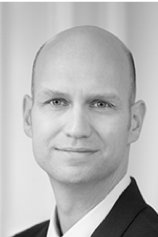 |
Prof. Dr. Markus AlbertDepartment Biologie
The research focus of the Albert Lab is on organismic interactions of plants with pathogens on molecular level. For plants, it is critical to sense pathogenic attackers at the cell surface by membrane-bound receptor proteins which can recognize “danger” either as endogenous signals (Damage-associated molecular patterns, DAMPs) or as exogenous signals (Microbe-associated molecular patterns, MAMPs). MAMP/DAMP perception switches on intracellular signaling cascades which activate cellular defense programs in infected host plants and ultimately lead to resistance. In our research projects, we focus on pathogen-associated molecular patterns, their perception via plant membrane-bound receptors and the activation of cellular signaling programs in the context of plant-plant and plant-microbe interactions. We have a set of bio-assays, such as the measurement of the stress-related phytohormone ethylene, reactive oxygen species (ROS), MAP-Kinase activation or the induction of defense marker genes, that all serve to quantitatively measure the receptor-induced plant cellular immune responses. Studies on receptor-ligand interactions as well as receptor-complex formation within plant cellular membranes using diverse techniques (e.g. IP, co-IP, CLS-microscopy, SPR, etc.) complete our spectrum of established tools to study early plant immunity responses. |
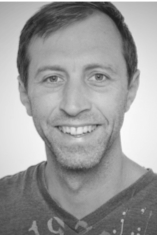 |
PD Dr. rer. nat. Dr. habil. med. Philipp ArnoldDepartment of Anatomy
The main focus of the Arnold lab is to unravel structure and function relationships of cell surface processes and to understand how these influence cellular signaling or homeostasis. Here, we try to identify processes that lead to the liberation of signal transducers or the formation of cell surface complexes that induce signaling. Additionally, we are interested in protein aggregation pathways that lead to the formation of physiological or pathological fiber like structures. Especially, we are interested in mechanisms that influence fibril formation onset, speed, stability or disassembly. To achieve our research goals, we use different biochemical, cellular and structure-based methods. These multiple approaches ensure that we can address these questions from the direct molecular interaction up to the systemic relevance. |
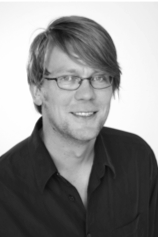 |
Prof. Dr. Rainer BöckmannDepartment Biologie
The Böckmann Lab focuses on the structure, dynamics, and function of biological membrane mimics, including e.g. lipid-protein interactions, membrane (nano-)domain formation, and (membrane) protein oligomerization studied both in atomistic and coarse-grained molecular dynamics simulations (Theoretical & Computational Membrane Biophysics). The central aim is on elucidating the driving forces for the formation of nano- and microdomains in biomembranes, their composition, dynamics, and role for the sorting of proteins in plasma membranes as well as for their function. |
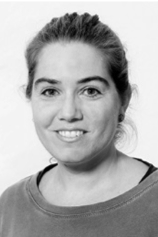 |
Prof. Dr. med. Caroline VoskensProfessur für Translationale Immundermatologie Department of Dermatology
The main focus of my research is on immunotherapy in patients with malignancies and autoimmune disease. It includes the pre-clinical and clinical development of cell-based products intended for medical use and we are about to start a clinical trial with adoptively transferred regulatory T cells in patients with ulcerative colitis. In addition, my group focusses on the functional behavior of immune cells, including their migration in vitro and in vivo. |
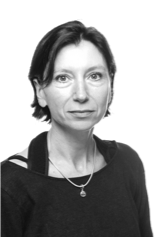 |
Prof. Dr. rer. nat. Aline BozecDepartment of Medicine 3
The main research focus of the Bozec Lab has demonstrated the role of the AP-1 transcription factor, specifically, the Fra-2 protein, in bone biology and bone metabolism. Using in vitro and in vivo gain- and loss-of-function approaches, she has uncovered very important roles for this protein in the differentiation of bone cell types such as osteoclasts and osteoblasts. Her current laboratory project is based on different approaches that all aim to elucidate the cellular and molecular mechanisms underlying bone homeostasis and diseases under the control of transcription factor as well as environmental stimuli. They are describing the molecular mechanism, by which i) altered expression of transcription factors in immune cells affects adaptive immunity and inflammation, and ii) how altered expression of hypoxia inducible factors in B-cells controls autoimmunity, infection and bone homeostasis. |
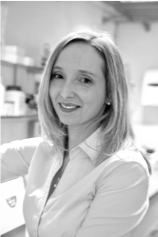 |
Prof. Dr. Kathrin CastiglioneDepartment of Chemical and Biological Engineering
A major research focus of the Castiglione lab is in the field of bionanotechnology, where we develop artificial cell-like structures made from amphiphilic molecules such as triblock copolymers or phospholipids. We are working intensively on the biofunctionalization of these vesicles with various proteins – not only for biotechnological applications, such as compartmentalized biocatalysis and molecular communication, but also to study fundamental principles of these self-assembled, nano-structured systems and the integrated proteins. Due to the highly interdisciplinary nature of our research, we use methods from (bio-)chemical engineering, protein engineering, (bio)physics, and material science. |
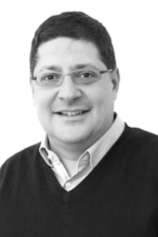 |
Prof. Dr. Triantafyllos ChavakisUniversity Clinic Carl Gustav Carus, TU Dresden
The main research focus of the Chavakis Lab is on innate immunity and immunometabolism. We study mechanisms of initiation and resolution of inflammation, the regulation of myelopoiesis in the bone marrow as well as the role of immune cells in metabolic disease. In this context, we study basic mechanisms of leukocyte adhesion and activation including the role of lipids therein. |
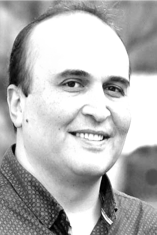 |
Prof. Dr. Ünal CoskunUniversity Clinic Carl Gustav Carus, TU Dresden
The main research focus of the Coskun Lab Laboratory is to understanding how lipid-protein interactions directly regulate structure/function of insulin and epidermal growth factor receptors and their shared downstream effector proteins, i.e. PI3K, AKT, PLC and PKC. |
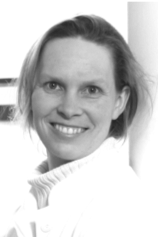 |
Prof. Dr. med. Diana Dudziak
The main research focus of the Dudziak lab is on the understanding the ontogeny, antigen presentation and cell migration of primary dendritic cell subpopulations in mice and man and their function in activation of primary T cell immune responses. The lab is also interested in antigen delivery approaches by antigen targeting antibodies to develop new cancer vaccines. For her research, Diana Dudziak uses cutting-edge technologies such as high through-put transcriptomic, miRNA, genomic and epigenetic profiling in addition to multicolor flow cytometry and confocal immunofluorescence microscopy, and immunological, molecular biology, and bioinformatic techniques. |
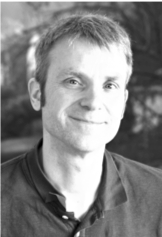 |
Prof. Dr. Christian EggelingFriedrich-Schiller University Jena
To better understand living matter such as cells and therefore to better treat diseases, one needs to understand how molecules and cells interact with each other. Importantly, one needs to understand the physics behind it, i.e. the biophysics. For this, scientist rely on highly sensitive and non-invasive analysis techniques, including far-field fluorescence microscopy. The aim of the Eggeling lab is providing optimized observation techniques to in more detail understand molecular and cellular interactions. A special focus is on heterogeneity in lipid membrane organization and its influence on membrane proteins, for example during immune cell activation. |
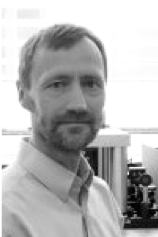 |
Prof. Dr. Ben FabryInstitute of Condensed Matter Physics
My main research area is molecular, cellular and tissue biomechanics, with a focus on cell invasion in tissue. My approach has been driven by the idea that the complex mechanical behavior of cells can be understood from concepts derived from the physics of soft materials. I have also developed novel technologies including magnetic micro-rheometers, and computational methods for traction reconstruction in 3-dimensional tissue matrices.
|
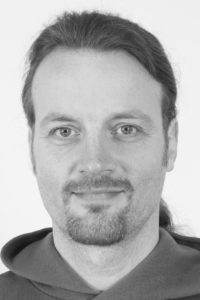 |
Prof. Dr. Kristian FranzeFaculty of Medicine
The Franze lab is taking interdisciplinary approaches to investigate how cellular forces, local cell and tissue mechanics and cellular mechanosensitivity contribute to CNS development and disease. Methods we are exploiting include atomic force microscopy, traction force microscopy and custom-built soft cell culture substrates in combination with state-of-the-art molecular and cell biological techniques. We have shown, for example, that nervous tissue is mechanically highly heterogeneous. Furthermore, we found that neurons constantly exert forces on their environment and that both neurons and glial cells respond to mechanical cues such as tissue stiffness. Understanding how and when CNS cells actively exert forces and respond to their mechanical environment will shed new light on CNS development, and it could eventually lead to novel biomedical approaches to treat or circumvent pathologies that involve mechanical signalling. |
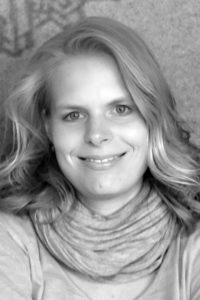 |
Dr. rer. nat. Bettina GrötschDepartment of Medicine 3
The link between infections and inflammatory bone loss is incompletely understood. Our lab is analyzing the molecular mechanisms by which innate and activated B cells regulate bone loss in inflammatory conditions like rheumatoid arthritis. Moreover, we are examining how the innate lectin receptors could link bacterial infections to bone loss. The results obtained from these studies will allow a better identification of the mechanisms regulating the interplay of the immune system and bone. This will provide a useful approach identifying new treatment strategies for osteoporosis and rheumatoid arthritis. |
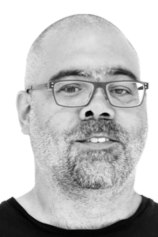 |
Prof. Dr. Jochen GuckInstitute of Optics, Information and Photonics
The main research focus of the Guck Division lies on exploring the physical properties of biological cells and tissues, and their importance for cell function and behavior. We also develop novel photonic, microfluidic and scanning-force probe techniques for the study of these optical and mechanical properties. The ultimate goal is utilizing this insight for novel diagnostic and therapeutic approaches. |
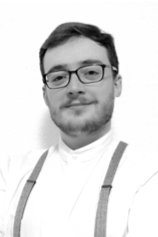 |
My main research focus lies in the cooperative dynamics and active transport in biophysical systems and their investigation through numerical simulations and theoretical modeling using the tools of out-of-equilibrium statistical physics and nonlinear dynamics. I studied the physical principles of self-propulsion and micro-swimming, the development of memory kernels to understand bimodal diffusive dynamics as observed with cells and bacteria, and more recently, the effect of the immediate environment, and adhesive forces on cells dynamics within growing colonies, including epithelium. |
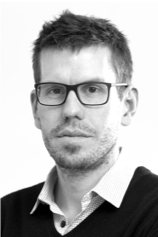 |
The main research interest of the Krönke lab is the identification of molecular and cellular pathways that control tolerance and immunity with a focus on their involvement in the pathogenesis of inflammatory and autoimmune disorders. In particular, the lab has a long-standing expertise in studying the role of lipid oxidation and the role of oxidized phospholipids as modulators of the innate and adaptive immune response. |
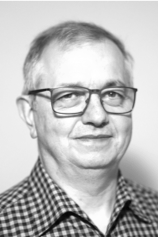 |
Prof. Dr. Richard LenzDepartment of Computer Science
The main research focus of Richard Lenz is on Evolutionary Data Management and related topics. This includes Data Quality and Process Optimization as well as Data Integration and Schema Inference in heterogeneous unknown datasets. Most recent projects have focused on Data Quality Monitoring in different application domains and on data integration in large scale data lakes. The traditional methods for data integration don’t scale for large and changing collections of heterogeneous data sets. Data lakes do provide unified access methods to a broad set of different data formats, but offer little support for semantic data integration. The research is aimed at exploiting hidden information about data semantics in data lakes in order to improve findability, interpretability, and understandability of these data. Thereby, SQL query logs are analyzed to extract information about data semantics. In addition, machine learning techniques are used for schema inference on sensor data streams. |
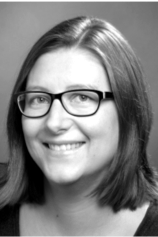 |
Prof. Dr. Anja LuxProfessur für Integrated Immunology Department Biologie
The main research focus of Anja Lux is characterization of effector functions of immunoglobulin G (IgG) antibodies via cellular Fc receptors (FcRs) and complement. She is especially interested in studying the impact of IgG subclass as well as glycosylation on interaction with FcγRs and triggering of the complement cascade. On the other hand, she is interested in deciphering how different FcRs co-operate in downstream activation of immune cells and to what extent FcR function is dependent on the immune cell e.g. a distinct cell membrane environment. These questions are studied in vitro, predominantly using primary human immune cells, as well as in vivo. For in vivo analysis different mouse and humanized mouse models are employed to investigate the therapeutic potential of IgG and its contribution in autoimmunity and chronic inflammation. |
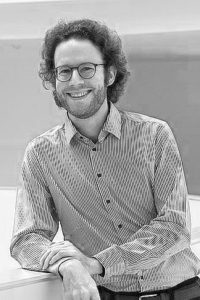 |
Dr. Leonhard MöcklMPI for the Science of Light
The Möckl Group uses light to investigate and influence biological systems. Two key questions are in the focus of our research. The first question deals with a longstanding mystery in cell biology: How does the glycocalyx regulate, and how is it regulated by, cellular state? To answer this question, we combine state-of-the-art optical techniques such as localization microscopy and iSCAT-based single-particle tracking to understand the relation between the spatiotemporal dynamics of the glycocalyx and global cellular state. The second question is about novel therapeutic compounds: How can we use precise light activation of tailored substances to kill cancer cells at defined locations in the body without harming healthy tissue? Here, we optimize the pharmacological properties of bisacylphosphane oxides, which were introduced as potential therapeutic substances by us, to precisely elicit cytotoxicity inside cancer cells via induction of oxidative stress. Thus, our research is located at the intersection of optics, biophysics, and biomedicine. |
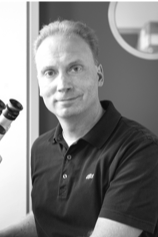 |
Prof. Dr. Falk NimmerjahnDepartment Biologie
The main research focus of the Nimmerjahn Lab is to understand how immunoglobulin G (IgG) molecules mediate their protective and autoreactive activity. To understand this in detail we are approaching this question at different levels, ranging from the development of novel in vivo model systems to obtaining a detailed understanding of the interactions of antibodies with their cell surface receptors (Fc-receptors) at the nanometer level. Our current research focuses on (i) understanding how the inhibitory Fc-receptor regulates the activation of innate and adaptive immune cell subsets, (ii) investigating how a variety of C-type lectins interact with Fc-receptors in modulating IgG activity on the level of individual cells and in vivo, and (iii) deciphering how different IgG subclasses interact with cellular Fc-receptors in vitro and in vivo. A methodological focus is on the generation of cellular model systems allowing to understand the impact of the cell membrane on Fc-receptor function. |
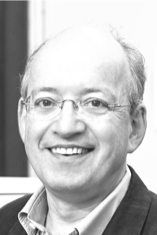 |
Prof. Dr. Lars NitschkeLiegenschaftsbeauftragter des Biologikums und Beauftragter für Lehrexport (CBI) und FACS Department Biologie
The main research focus of the Nitschke group is the differentiation, A methodological focus is on genetic mouse models, B cell signalling, immunological methods and autoimmune mouse models. |
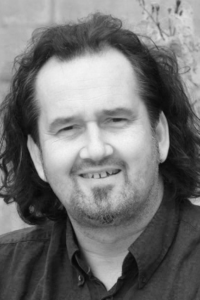 |
Dr. Ralf PalmisanoFAU Kompetenzzentren
|
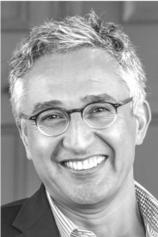 |
Prof. Dr. Vahid SandoghdarInstitute of Optics, Information and Photonics
The research of Vahid Sandoghdar aims to advance experimental and theoretical mastery of light-matter interaction at the nanometer scale and to achieve the same degree of control and finesse that is known from the gas-phase quantum optics in the condensed phase. To do this, he combines concepts from quantum optics, laser spectroscopy, cryogenics, optical imaging, scanning probe technology and nanofluidics. In this endeavour, he has addressed a wide spectrum of scientific questions, ranging from quantum optics to biophysics. |
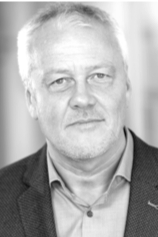 |
Prof. Dr. Markus SauerBiocenter, University of Würzburg
The main research focus of the Sauer Lab is the development of refined fluorescence microscopy methods with high spatial and temporal resolution. Photophysical studies of the reactivity of organic fluorophores in the presence of triplet quenchers, such as thiols and oxygen, formed the basis for the development of a method for highly reliable photoswitching of organic dyes (e.g. Cy5) and thus, ultimately, for single-molecule localization microscopy. These developments laid the foundation for the introduction of direct stochastic optical reconstruction microscopy (dSTORM) that enables super-resolution fluorescence imaging with standard organic fluorophores with a spatial resolution of ~20nm in the imaging plane in fixed and in living cells. In recent years I have pioneered the use of PALM and dSTORM in collaboration with different partners to investigate the distribution and expression levels of proteins in bacteria, neurons, and plasma membrane proteins, glycans, and sphingolipids. |
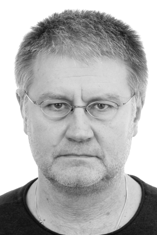 |
Dr. Andrej ShevchenkoMPI of Molecular Cell Biology and Genetics
We develop mass spectrometry – based analytical methods aiming at and relying upon the absolute (molar) quantification of common metabolites, lipids, and proteins. Lipidomics and proteomics driven by the absolute quantification could be used synergistically to snapshot the chemical state of lipid-protein assemblies and membrane microdomains and delineate their molecular response to genetic, pharmacological and environmental interference. |
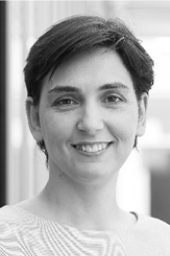 |
Prof. Dr. Ana-Sunčana SmithInstitute of Theoretical Physics
The PULS Group, lead by Ana-Sunčana Smith, focuses on modeling processes on biological and materials interfaces. The group made significant contributions in developing theoretical approaches for studying adherent cell and biomimetic mebranes including the biomechanical regulation of cell function such as immune cell activation and inhibition. The strength of her group is her interdisciplinary research approach, spanning from theoretical modelling, simulations to collaborative experimental investigations of cell and tissue models. From the methodological point of view, PULS combines analytic calculations with molecular and mesoscopic simulations, many of which are self-developed. The modeling effort is supported by a significant experience in complex data analysis and signal processing which is utilized for the development of microscopy and spectroscopy techniques. |
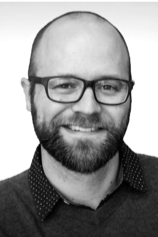 |
Prof. Dr. med. Stefan UderhardtDepartment of Medicine 3
The Uderhardt Lab seeks to elucidate the cellular and molecular mechanisms tissues employ in order to protect themselves against unwanted, damaging inflammation. A particular focus of the lab is put on tissue resident macrophages, which – together with interstitial fibroblasts – constitute the universal building blocks of stromal tissues across different organs and even species, and are part of a multi-layered regulation of the initial steps of an inflammatory response to tissue damage. We explore the cellular and molecular biology as well as the mechanistic principles of the anti-inflammatory operations of these phagocytes within the context of living tissues, and aim to comprehend the reciprocal interactions between resident and recruited immune effector cells on multiple experimental levels. Ultimate goal of our research is to achieve top-down control of complex cellular behavior in intact stromal environments and particularly of the tissue-protective functions of stromal macrophages, in order not only to treat but in fact prevent inflammatory diseases. |
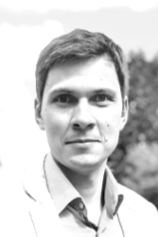 |
Prof. Dr. Vasily ZaburdaevDepartment Biologie
The group of Vasily Zaburdaev in the Department of Biology at FAU and at the Max Planck Zentrum für Physik und Medizin develops theoretical models which help to understand complex biological phenomena and their implications in disease. The group brings expertise in theoretical biophysics, statistical physics and numerical methods and works in close collaboration with experimental groups. Interested in organizational principles working in the range of scales from chromatin in the cell nucleus to the multicellular aggregates the group uses approaches from theory of stochastic processes to the continuum theory of active hydrodynamics. The focus is on understanding the physical mechanisms governing complex biological systems out of thermal equilibrium. |
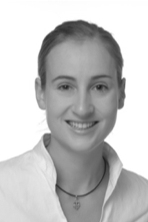 |
Prof. Dr. rer. nat. Friederike ZunkeDepartment of Neurology
My group is interested in the molecular and cellular disease mechanisms of neurodegenerative disorders -in particular Parkinson’s disease (PD). We are also looking into the aggregation mechanisms and toxicity of amyloid protein aggregates, like for instance found in Parkinson disease (PD) patients’ brains. Moereover, we study lysosomal and phagocytotic pathways and analyze degradation and aggregation mechanism of amyloid proteins in health and disease. For our studies, we apply various biochemical assays and use immune cell models and neuronal cell lines, as well as induced pluripotent stem cells (iPSC) derived from patients, suffering from neurodegenerative diseases. Additionally, we do biochemical and structural protein analyses and are involved in projects solving structures of proteins and protein complexes i in PD pathology. |
